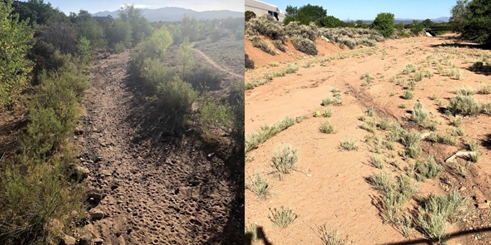Study shows flow classification tool can be adapted to distinguish intermittent and ephemeral streams in Southwest
SCCWRP and its partners have shown in a proof-of-concept study that a flow classification tool that can rapidly distinguish intermittent streams from ephemeral streams in the Pacific Northwest is feasible for application in the U.S. Southwest.
The tool, which determines a stream’s flow duration based on easily observed field indicators, was originally developed by the U.S. Environmental Protection Agency. Researchers are now adapting and refining the tool for use across California, Arizona and New Mexico. Researchers also are developing a comparable tool in parallel for use in the adjacent Western Mountains region.

Watershed managers need to be able to distinguish intermittent streams from ephemeral because, in certain cases, they are subject to different regulatory requirements. Intermittent streams are defined as streams that have sustained seasonal flows from snow melt and groundwater, whereas ephemeral streams only experience brief surface flows from runoff.
The proof-of-concept study found that certain biological indicators – including riparian plants and aquatic invertebrates that prefer perennially flowing water – are particularly effective at distinguishing stream types.
Researchers will spend the next year finalizing the Southwest tool; they will particularly focus on how to account for the long-term variability observed in Southern California stream flow patterns.
More news related to: Bioassessment, Ecohydrology